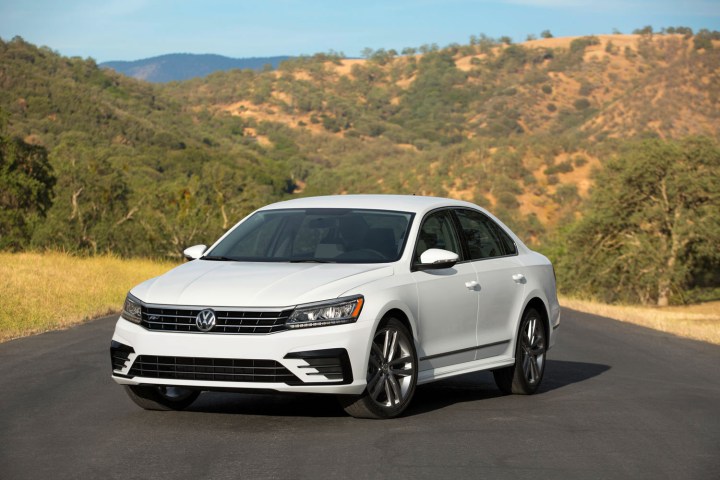
The yet-unnamed model is based on the Passat that’s built in Chattanooga, Tennessee, and it was developed specifically for the American market by the carmaker’s North American division. The prototype hasn’t been shown to the public yet, but Motor Authority was recently given an exclusive preview of it right at the factory.
While cameras weren’t allowed, the website remembers that he hot-rodded Passat features a white paint job with a contrasting black roof, black mirror caps, a trunk-mounted spoiler, and red accents on the grille that echo the iconic GTI.
The sporty treatment continues inside with carbon fiber-look trim, more red accents, and a black headliner. All told, the concept looks more muscular than even the Passat R-Line (pictured), which is currently billed as the sport-focused member of the lineup.
Read more: Volkswagen’s 310-hp Golf GTI is the new king of the ‘Ring
Volkswagen hasn’t decided which engine the model should use. Its options include the Passat’s 1.8-liter turbo four, the 3.6-liter V6, and the 2.0-liter turbo four that’s also found under the hood of the GTI and a handful of Audi models. What’s all but certain is that front-wheel drive and a dual-clutch automatic transmission will come standard regardless of which engine is chosen.
Executives warn that the sportier Passat hasn’t been given the green light for production yet. The good news is that, if it’s approved, it could make the transition from concept to production car fairly quickly because it’s largely built with off-the-shelf components.
Looking back
This isn’t the first time that Volkswagen has evaluated ways to put the Passat on steroids. In 1977, engineers stuffed a 110-horsepower 1.6-liter four-cylinder pulled out of an Audi 80 GTE into the engine bay of a first-generation Passat. They also installed beefier brakes on both axles, wider tires, and a sporty-looking body kit.
Called Passat GTI, the two-door prototype was briefly tested on the roads around Wolfsburg, Germany, but it was never given the green light for production. Toni Schmücker, Volkswagen’s head honcho at the time, firmly believed the words “performance” and “Passat” were mutually exclusive, much to the dismay of the engineers working on the project.



